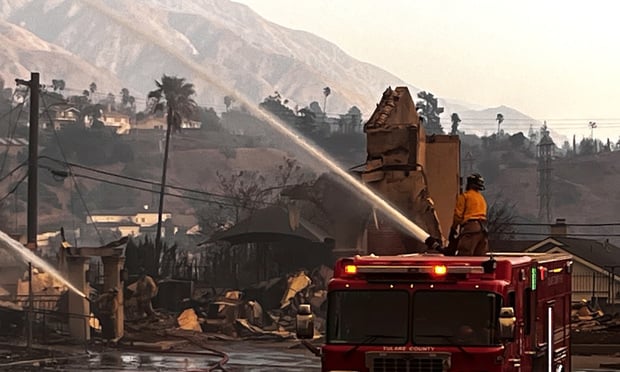One of the things that tie nearly all residences, commercial buildings, and industrial facilities together is the presence of a heating, ventilation, and air conditioning (HVAC) system. The most prominent visible feature of the HVAC system, and the one most susceptible to direct physical damage, is the air conditioning condenser.
AC Condenser Units
The condenser is a component of the refrigeration cycle that is used to cool the air in a building. Hot high pressure refrigerant gas is pumped from a compressor to the outdoor condenser, where it loses the heat to the outside. The condenser removes the heat from the system by using a fan to pull air across a coil that the refrigerant runs through. In order to remove that heat with maximal efficiency, the condensing unit typically features a coil made of copper (high thermal conductivity) that is covered with many thin aluminum fins (high surface area). Condensers are installed in areas that are exposed to outside air, such as rooftops or ground pads.
How Are Condenser Units Damaged by Hail?
In order to function efficiently, AC condenser units must be exposed to outside air. This also means that they are exposed to the hazards of the outdoors, including impact by hailstones. The National Weather Service (NWS) records indicate that from 2010 to 2013, the US experienced an average of nearly 7,000 hail reports per year1. This figure only accounts for hailstones measuring more than 1 inch in size, which can be considered the threshold for damaging hail.
When an AC condensing unit is struck by hailstones, it can cause damage by denting and deforming the thin aluminum fins that cover the coil. These fins are spaced close together, and when they are deformed, they can press together or bend back against the copper coil. These types of damage will block air flow in that section of the coil.
If enough of the coil is blocked, and the fan cannot pull enough air through the fins, the condenser will not function efficiently. This will result in increased running time for the AC system, inadequate cooling, and a shortened lifespan for the compressor and other mechanical components.
Want to continue reading?
Become a Free PropertyCasualty360 Digital Reader
Your access to unlimited PropertyCasualty360 content isn’t changing.
Once you are an ALM digital member, you’ll receive:
- Breaking insurance news and analysis, on-site and via our newsletters and custom alerts
- Weekly Insurance Speak podcast featuring exclusive interviews with industry leaders
- Educational webcasts, white papers, and ebooks from industry thought leaders
- Critical converage of the employee benefits and financial advisory markets on our other ALM sites, BenefitsPRO and ThinkAdvisor
Already have an account? Sign In Now
© 2025 ALM Global, LLC, All Rights Reserved. Request academic re-use from www.copyright.com. All other uses, submit a request to [email protected]. For more information visit Asset & Logo Licensing.








